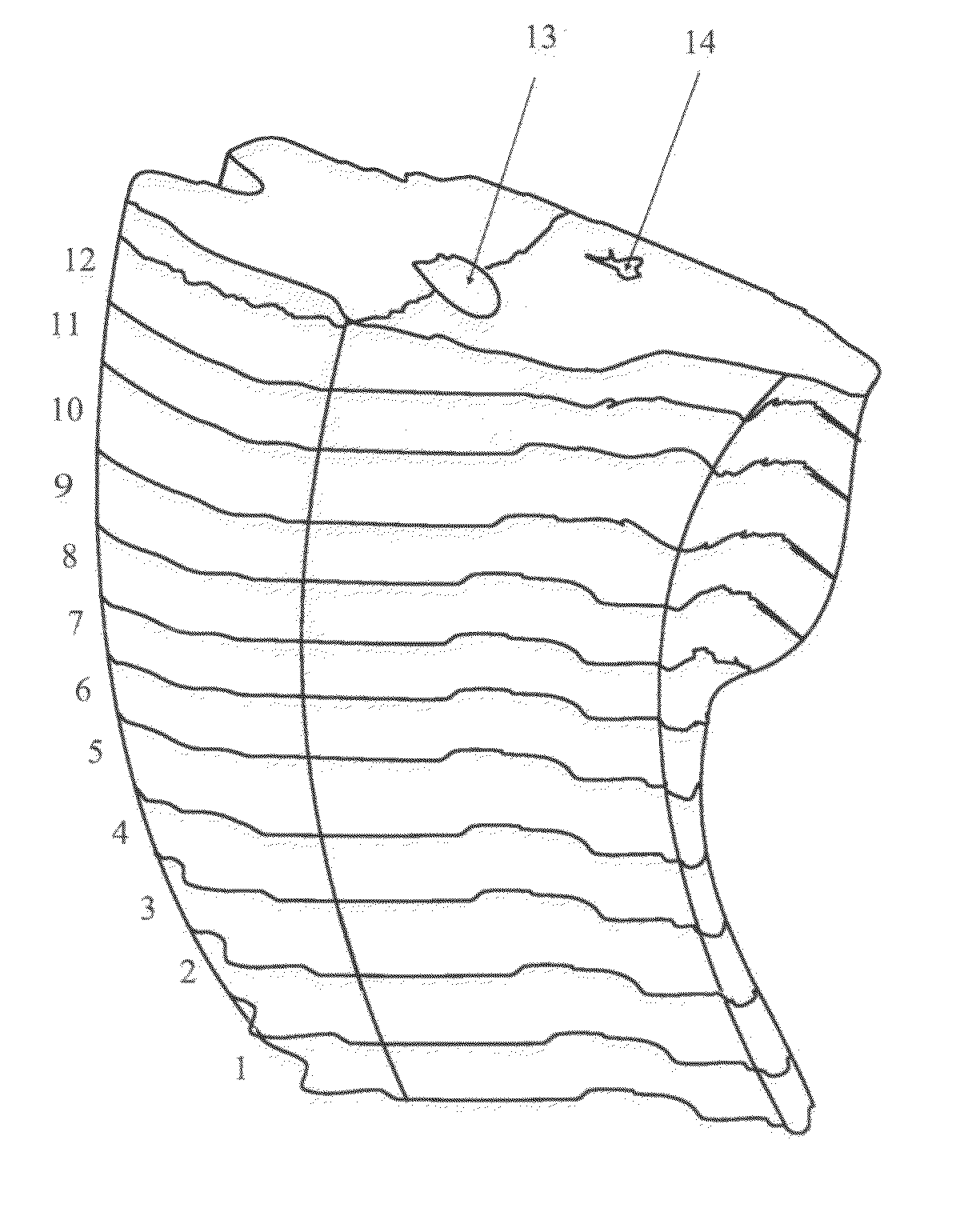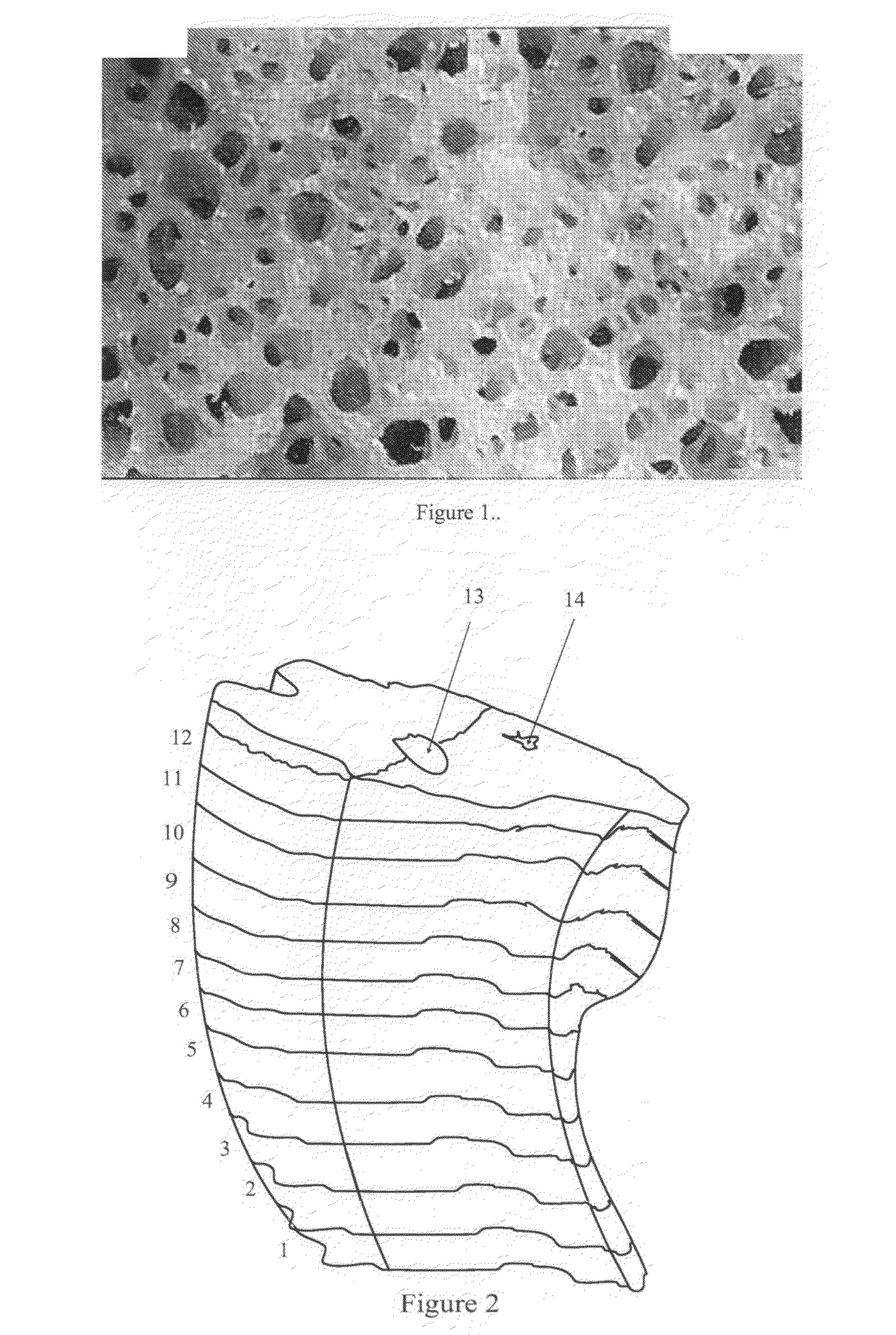Casting Process
- Summary
- Abstract
- Description
- Claims
- Application Information
AI Technical Summary
Benefits of technology
Problems solved by technology
Method used
Image
Examples
example 1
[0071]A composition based upon hydroxyapatite and suitable as a bone scaffold system with high porosity was prepared by mixing the following:
50% P263S HAP fully sintered, monomodal particle size distribution <10 μm
50% PS221S BM168 fully sintered, ball milled, bimodal <20 μm
[0072]These powders were tumbled in a jar mill without grinding media for 2 hours. A liquid mixture was mixed together using a high shear mixer, using the following proportions:
47% Morrisol AS 2040
47% Water
5.6% Glycerol
0.4% Dispex A40
[0073]The HAP powder mixture was ground with the liquid mixture in proportions of 73% powder to 27% liquid in a mortar and pestle on a vibration table until the mixture was fully wetted and flowed under vibration. This mixture was introduced into a syringe with a diameter of 2 mm in which the plunger was connected to a stepping motor which could be controlled by a computer so it could dispense a controlled amount of material by volume over a period of time.
[0074]The substrate was an a...
example 2
[0075]The powders were varied in proportion from Example 1, as follows:
62.5% P263S HAP fully sintered, monomodal particle size distribution <10 μm
37.5% PS221S BM168 fully sintered, ball milled, bimodal <20 μm
and mixed with the liquid mixture from Example 1 in the identical proportions.
[0076]The procedure for direct writing this ceramic was as in Example 1 including the drying and firing of the resulting component. This ceramic had lower overall shrinkage than the material produced in Example 1 and had a fired porosity of 26%.
example 3
[0077]This composition used the same type and proportions of HAP ceramic powders as in Example 1 and mixed in the same way but the liquid mixture comprised:
47% Morrisol AS 2040
[0078]47% Metalflo 4000 colloidal graphite
5.6% Glycerol
0.4% Dispex A40
[0079]As in Example 1. the powder and liquid mixtures were mixed in proportions 73% powder to 27% liquid mixture. This mixture was dispensed through a 1 mm diameter syringe orifice and processed by direct write as in Example 1 including the drying process. The firing cycle consisted of heating to 600° C. at a rate of 3° C. per minute and holding at 600° C. for 1 hour then rising to 1250° C. at 5° C. per minute and holding at this temperature for one hour. The resulting component had inherent micro-porosity of several microns which was thought beneficial for bone growth and was too fine to be written in by the direct write process.
PUM
| Property | Measurement | Unit |
|---|---|---|
| Temperature | aaaaa | aaaaa |
| Temperature | aaaaa | aaaaa |
| Percent by mass | aaaaa | aaaaa |
Abstract
Description
Claims
Application Information
 Login to View More
Login to View More - Generate Ideas
- Intellectual Property
- Life Sciences
- Materials
- Tech Scout
- Unparalleled Data Quality
- Higher Quality Content
- 60% Fewer Hallucinations
Browse by: Latest US Patents, China's latest patents, Technical Efficacy Thesaurus, Application Domain, Technology Topic, Popular Technical Reports.
© 2025 PatSnap. All rights reserved.Legal|Privacy policy|Modern Slavery Act Transparency Statement|Sitemap|About US| Contact US: help@patsnap.com



